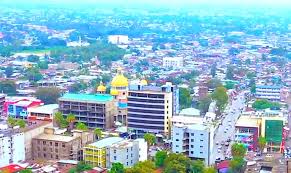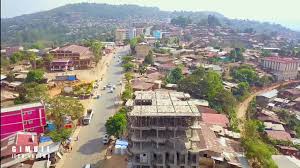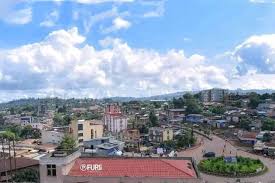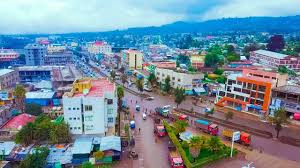Shashemene, often called “Shashe” by locals, is a unique and historically significant city in southern Ethiopia, located in the Oromia region. This rapidly urbanizing city lies approximately 250 kilometers south of the capital, Addis Ababa. The city covers an area of 17.19 square kilometers and had an estimated population of over 408,000 people by mid-2022. It is most famous for its Rastafarian community, which is deeply rooted in the history of Ethiopia’s relations with the African diaspora, particularly in the context of the Pan-African movement and the Rastafarian religion.
Shashemene has a rich and complex history, a vibrant mix of cultures, and a unique place in Ethiopia’s national and international narrative. Its nickname “Best Business Center” reflects its growing importance as a commercial hub in the West Arsi Zone, while its strong association with the Rastafarian movement makes it a spiritual home for many followers worldwide. Shashemene’s natural beauty, with its surrounding rivers, proximity to national parks, and a fertile landscape, adds to its allure as a destination for both tourists and pilgrims.
Historical Background: Shashemene and the Land Grant

The story of Shashemene’s global significance began in the aftermath of the Italian occupation of Ethiopia (1936-1941), when Emperor Haile Selassie I reclaimed his throne. In gratitude to Black people in the diaspora, especially African Americans and Caribbean nationals, for their support during the Italo-Ethiopian conflict, Emperor Haile Selassie made a historic decision to offer land to people of African descent who wanted to return to their ancestral homeland. In 1948, he granted 500 acres of fertile land in Shashemene to those who wished to settle in Ethiopia. This land grant became a symbol of Pan-Africanism and the ongoing struggle against racial oppression, especially for Black people in the United States and the Caribbean who were eager to escape the racial injustice they faced in their homelands.
This land grant came after the formation of the Ethiopian World Federation (EWF), which Haile Selassie established in Harlem, New York. The EWF aimed to strengthen bonds between Ethiopia and people of African descent living abroad. News of the land grant eventually reached Jamaica, where the Rastafarian movement, which revered Haile Selassie as a messianic figure, saw the emperor’s gesture as a divine fulfillment of their religious beliefs. The Rastafarians, who viewed Ethiopia as Zion (a utopia or promised land), began planning to emigrate to Shashemene, seeing it as an opportunity to return to Africa, escape the oppression of Babylon (Western colonial systems), and build a spiritual community in Ethiopia.
The Early Rastafarian Settlers
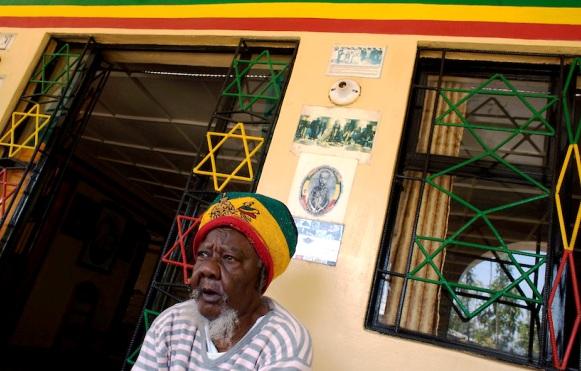
The first people to take advantage of Haile Selassie’s land grant were members of the Ethiopian World Federation. James Piper and his wife Helen were among the first West Indian settlers to arrive in Shashemene in 1955 as land grant administrators. They were followed by other prominent Rastafarians, including Gladstone Robinson, who arrived in 1964 and eventually became the leader of the Rastafarian settlement.
The Rastafarian community in Shashemene quickly grew as more followers of the faith arrived. By the mid-1960s, there was a steady stream of Rastafarians from Jamaica and other parts of the Caribbean, with the settlement population peaking at over 2,000 people. These early settlers believed that by returning to Ethiopia, they were fulfilling a divine prophecy and escaping the oppression of Babylon.
Shashemene as a Symbol of Pan-Africanism
The land grant and the subsequent settlement of Rastafarians in Shashemene were seen as a powerful symbol of Pan-Africanism. It represented a tangible connection between the African diaspora and the African continent. For many African Americans and Caribbeans, Ethiopia symbolized freedom, independence, and spiritual renewal. Shashemene became a focal point of this movement, attracting visitors, settlers, and political figures interested in Pan-Africanism and the plight of Black people globally.
However, as the number of settlers grew, the Rastafarian community faced several challenges. They had to navigate Ethiopia’s complex political landscape, a different cultural environment, and the practical difficulties of building a new life in a foreign land. Moreover, some of the settlers initially struggled with adjusting to Ethiopia’s Orthodox Christian culture, which differed from their religious beliefs and practices.
The Derg Era and Its Impact
The establishment of the Derg regime following the overthrow of Emperor Haile Selassie in 1974 marked a significant turning point in the history of Shashemene’s Rastafarian community. The Derg, a Marxist-Leninist military junta led by Mengistu Haile Mariam, nationalized all land, including the land that had been granted to the Rastafarians by Haile Selassie. This caused uncertainty for the Rastafarian settlers, who no longer had legal ownership of their land. Despite this, many Rastafarians continued to live in Shashemene throughout the Derg era, although some chose to leave.
The political upheaval during the Derg period and subsequent governments in Ethiopia meant that the original vision of the Shashemene settlement as a thriving Rastafarian community was never fully realized. The population of Rastafarian settlers dwindled over the years, with many returning to Jamaica or other parts of the Caribbean. By the early 2000s, the number of Rastafarians living in Shashemene had decreased to fewer than 300 people.
Present-Day Shashemene
Today, Shashemene remains a unique city in Ethiopia, characterized by its multicultural population and its connection to the global Rastafarian movement. While the number of Rastafarians in the city has declined, the community continues to be a vital part of Shashemene’s identity. The town’s local economy is bolstered by tourism, with visitors coming to learn about the city’s history, experience the Rastafarian culture, and explore the surrounding natural attractions, such as the nearby Wondo Genet resort and the Senkele Wildlife Sanctuary.
The Rastafarian community in Shashemene has also made efforts to revitalize their settlement. In recent years, there have been discussions about developing sustainable projects that would benefit both the Rastafarian settlers and the local Ethiopian population. These projects include educational programs, agricultural initiatives, and cultural exchanges. The Ethiopian government has also shown interest in working with the Rastafarian community to develop Shashemene into a model town that promotes tourism and sustainable development.
Demographics and Cultural Diversity
Shashemene’s population is diverse, reflecting the broader cultural and religious landscape of Ethiopia. According to the 2007 national census, the town’s population was reported at 100,454, with a plurality (43.44%) adhering to Ethiopian Orthodox Christianity. However, a significant portion of the population is Muslim (31.15%), while 23.53% identify as Protestant, and a small minority (1.3%) are Catholic.
This religious diversity is mirrored by the city’s cultural diversity, as Shashemene is home to people from various ethnic groups, including the Oromo, Amhara, and Gurage. The city’s markets, religious sites, and public spaces reflect this rich cultural tapestry, offering a unique blend of Ethiopian traditions and the Rastafarian influence.
The Economy and Urbanization of Shashemene
Shashemene has experienced significant growth in recent years, becoming one of the fastest urbanizing centers in Oromia Regional State. Its strategic location along major transportation routes has made it a bustling commercial hub, attracting businesses and industries. The city’s economy is based on agriculture, trade, and services, with a growing focus on tourism. Shashemene is also known for its vibrant markets, where visitors can find local produce, handicrafts, and goods from across the region.
The city’s infrastructure has been expanding to accommodate its growing population and economic importance. Shashemene is divided into 17 sub-cities, each with its own unique character and offerings. The city’s administration has been working to improve services, including transportation, sanitation, and housing, to meet the needs of its residents and attract more visitors and investors.
Conclusion: Shashemene’s Legacy and Future
Shashemene’s significance lies not only in its historical connection to the Rastafarian movement and Pan-Africanism but also in its vibrant cultural and economic life. The city’s journey from a small town to a global symbol of Black unity and empowerment is a testament to Ethiopia’s enduring legacy as a beacon for people of African descent around the world.
While the Rastafarian community in Shashemene has faced challenges over the years, their presence continues to shape the city’s identity. The future of Shashemene is bright, with its growing importance as a business center and tourist destination. As the city continues to evolve, it remains a place where history, culture, and spirituality converge, offering a unique window into Ethiopia’s rich past and promising future.

